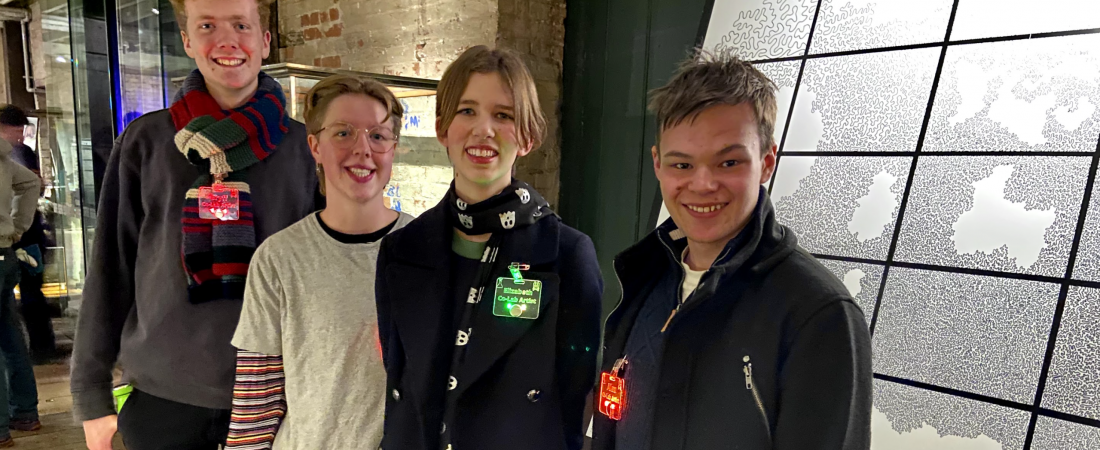Friends’ Artists at the Beaker Street Festival
Posted on August 10, 2021
Four Friends’ School International Baccalaureate (IB) students have been invited to take part in the Beaker Street Festival that opened last Friday night (6 August). The students are participating in the event as part of the Co-Lab project that pairs Years 9 – 12 art students with early-career scientists.
The Beaker Street Festival is an annual, nine-day celebration of science and art in lutruwita/Tasmania, full of engaging scientists, compelling ideas, and innovative artworks from across the state.
Our four IB students were assigned their scientists, visited their lab/met with their scientists and learned about the scientist’s work. They were then invited to create a work of art that embodies their scientist’s work. These artworks are being displayed at TMAG for the duration of the Beaker Street Festival. The students, and their scientists, spoke about their work on Friday night as part of the opening of the festival. They are located in the Bond Store.
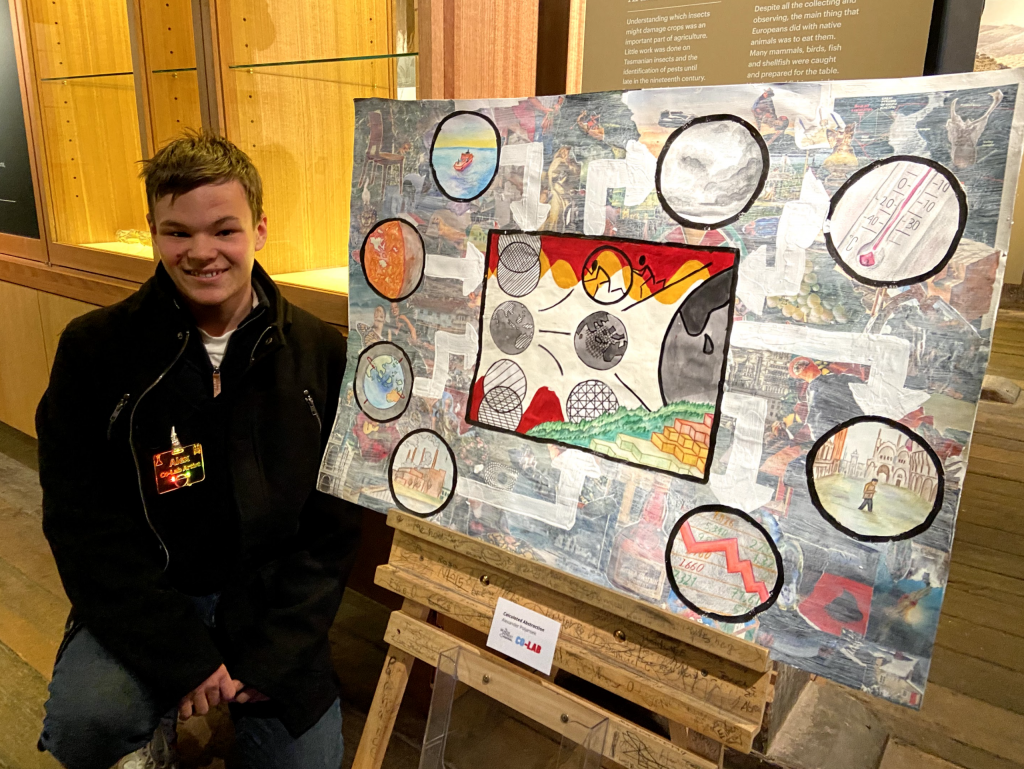
Calculated Abstraction
Alex Poljansek (Year 12)
Collage with ink, acrylic paint and watercolour
Collaborating scientist: Dr Courtney Quinn
Alex says of his piece: This piece is inspired by climate modelling and aims to explain the process if modelling, albeit in an abstract way. The composition of the piece is reminiscent of a systems diagram, with inputs, outputs and a main body, representing a scientific model. The inputs are the various pieces of data needed to construct a model, and the outputs are the applications of said model. Within the main body are many core concepts essential to models, such as simplification, variables and parameters, and feedback loops. This is all placed upon a collage that represents the eclectic and complex nature of the world and therefore the difficulties that come from trying to model it.
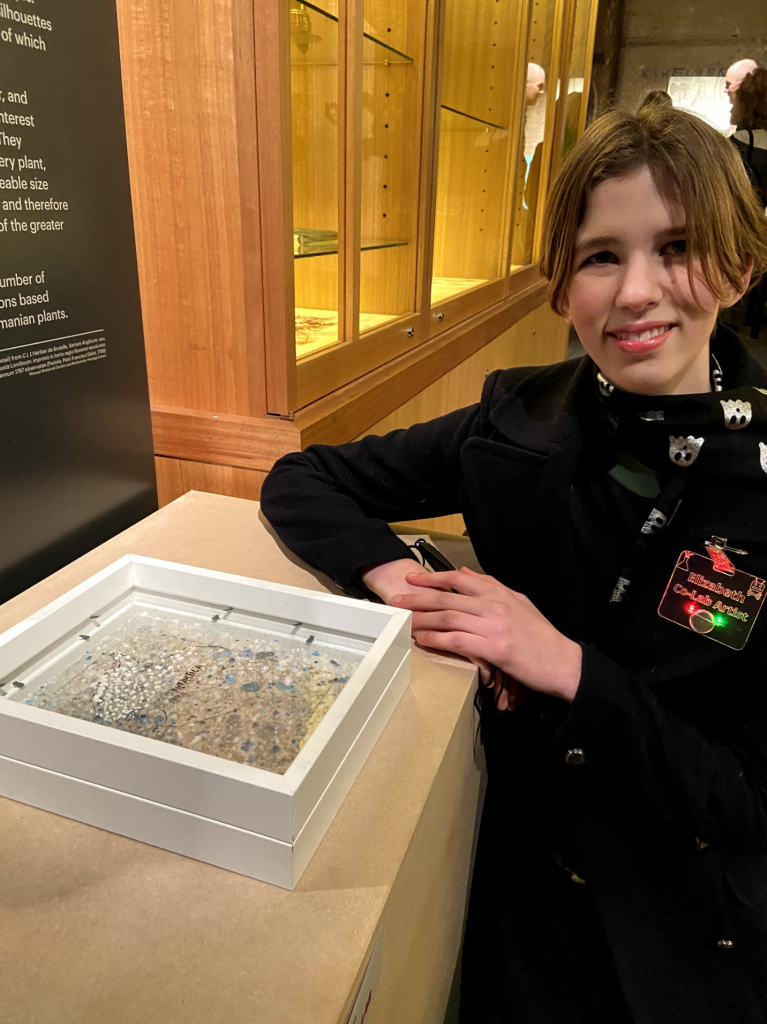
Califaction
Elizabeth Cairns (Year 11)
Salt crystals and glass etching
Collaborating scientist: Lisa Craw
Elizabeth says of her piece: My first artwork shows how part of Lisa Craw’s work is aimed at finding climate solutions for melting glaciers. The second demonstrates what Lisa studies, being the velocity of ice crystals, and the colour, both of which change dependant on the pressure on them. Lisa also noted that many possible solutions have ethical problems, or may seem unreasonable (like painting rocks silver so that they absorb less heat, and melt less ice), however, may be the best option in drastic situations. I found this interesting, so I used salt crystals in order to show how humans might replace glaciers, or stop them from melting which would make the environment more and more artificial.
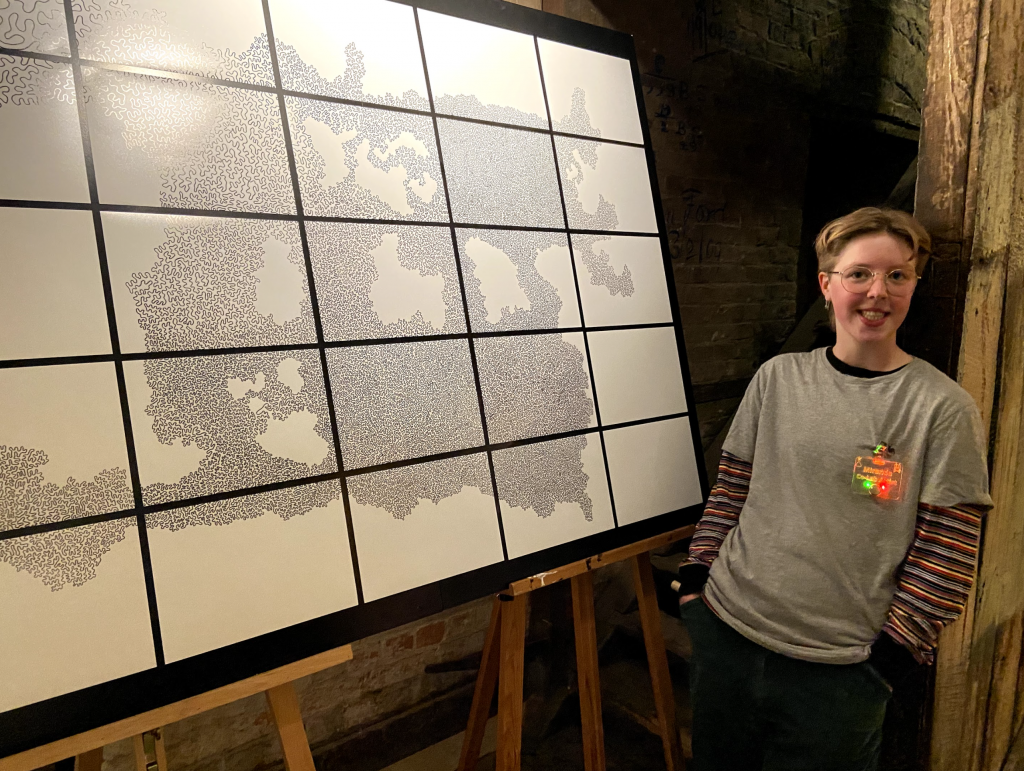
Fluidity
Miranda Vaughan (Year 12)
Pen on paper
Collaborating scientist: Lisa Craw
Miranda says of her piece: My artwork responds to the movement of ice in Antarctica. I have used a continuous curling line to represent fluidity, as well as a gradual change in scale to illustrate the melting of ice over time. The graphic pattern mimics the microscopic detail of ice crystals but also alludes to an aerial view of ice formations. I’m fascinated by the way that glaciers are seen as solid and timeless, despite melting at a rapid rate. I have learnt about the role that individual ice crystals play in the movement of ice, which leads to the global issue of sea levels rising. Minute characteristics or events can have a significant impact collectively. This has made me think about the influence that we, as humans, have on the world around us. Although our individual actions may not seem powerful, together change can be made.
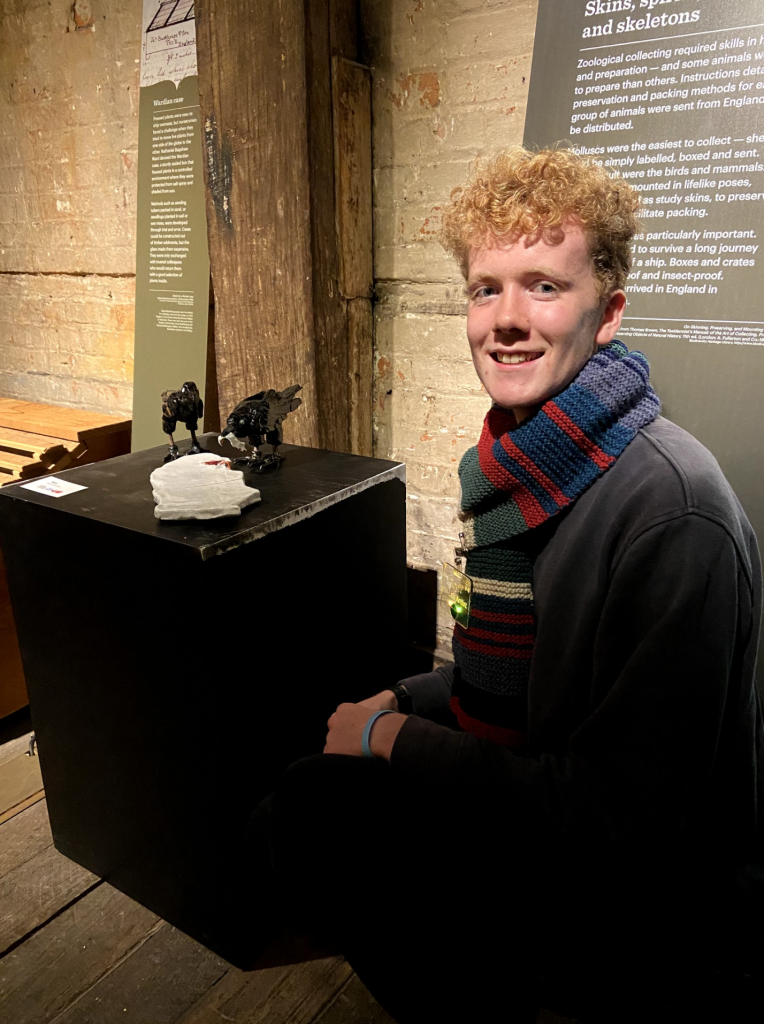
Feast
Gryff Connah (Year 11)
Ceramic and wood
Collaborating scientist: Matthew Fielding
Gryff says of his piece: The artwork, entitled Feast, is a ceramic manifestation of the work of ornithologist and PhD student, Matt Fielding. Aspects of Matt’s PhD are concerned with the rise and semi-tyranny of the Forest Raven (Corvus tasmanicus) populations in the Bass Strait Islands. Most notably, Matt spoke to me of the situation on King Island, upon which these birds have become the apex scavenger by way of lack of competition and increased roadkill through vehicle collisions. On this island, they can be seen dominating paddocks and copses of tea tree, to the point of plaguing the landscape. This artwork is a representation of the ecological imbalance: two gargantuan ravens loom over the island, an island that to them is roadkill, a carcass to indulge in. The scale of these ravens is an actualisation of the power that these creatures wield over the landscape and is haunting in its message of environmental focus.
